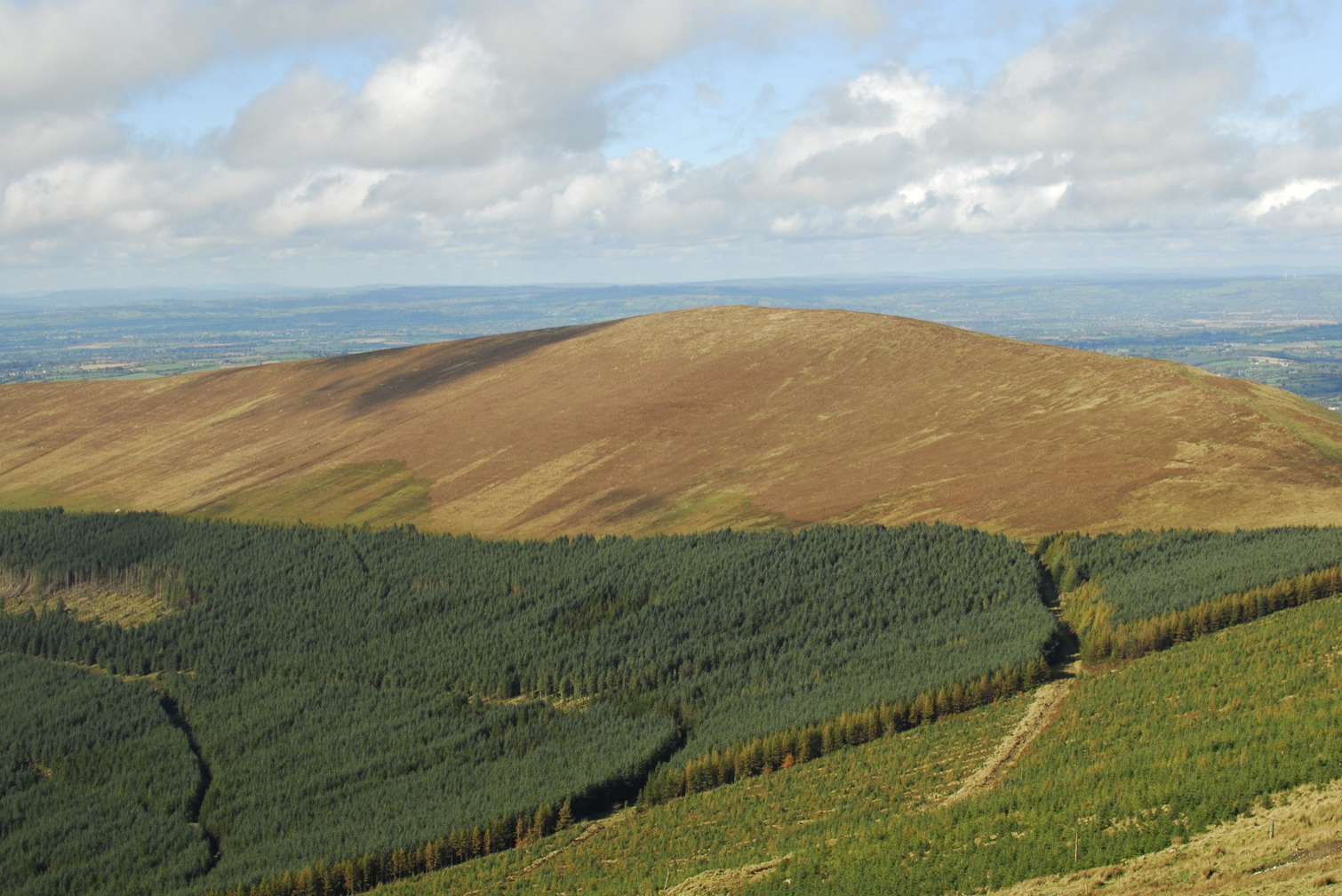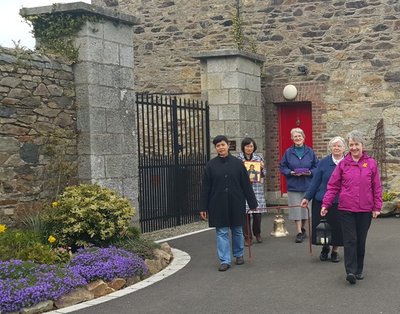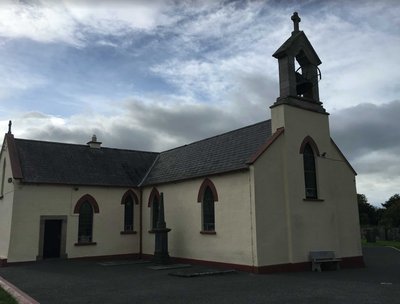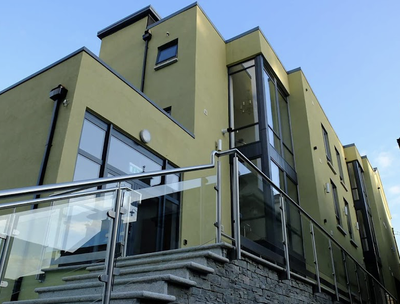
2. Start 2: Bunclody to Myshall via Mount Leinster
4 points of interest

Mount Leinster PanoramicMount Leinster
Mount Leinster peaks at 847m. It straddles the boundary between Carlow County to the north and Wexford County to the south. Belonging to a remote mountain range, it offers a complete panorama of this southern part of Ireland. It is the presumed birthplace of Saint Columban.
Nine Stones HistoricalNine Stones
The NE-SW alignment of these small stones does not seem to have any astronomical significance and may be quite modern. The origin of these stones is the subject of several hypotheses: they are the burial place of nine chiefs, or nine shepherds, or even nine rebels killed in 1798. Whatever the reason for their existence, these stones are worth a visit for the spectacular panorama of their location.

Myshall HistoricalTrail of The Saints
Myshall is one of the villages on Carlow’s ‘Trail of the Saints’ and St. Finian, known as the ‘Tutor of the Saints of Ireland’ and founder of a most celebrated monastery at Clonard, Co. Meath, was born here c470 A.D. and in the village one can see the remains of a Romanesque church founded by him in the 6th century. A stained glass window in the Catholic Church of Exaltation of the Holy Cross commemorates him. This Catholic Church, built in the form of a cross dates back to 1776. A small amenity park in the village Tobar Bhríde contains a holy well dedicated to St. Brigid after whom the park is called and a ‘pattern’ was held annually here on the 14th day of September. Records of this Fair stretch back over 200 years. St. Columbanus, Ireland’s first European saint is also linked with the area as are St. Fortcheirn of Kiloughternane who reputedly baptised St. Finian and St. Moling who was also a visitor to the district with Thomple Moling cemetery situated in the parish off the Garryhill/Borris Road. Some 2km from the village one will find another holy well at Cranavane, the waters of which are said to cure ‘soreness of eyes, pains and debility of the limbs and all body ailments’ In former times it was customary to dip coffins in the well before burial in nearby Barragh Graveyard 400m to the west of this site.
To know more about it
Myshall CulturalChurch of Exaltation of Holy Cross
The village's Catholic church was built in 1888. It houses a painting of Saint Columban who was born nearby. A recent statue of the saint was built next to the church to mark the attachment of the inhabitants to this great character.
Description
From the church, turn left onto the main road and continue past the bridge over the River Clody uphill to the second crossroads with a road on the left:
- Turn left following the sign ‘Turas Columbanus, The Columban Way’. Continue along this small, fairly straight road until you come to a forest on the right-hand side only. After a right-hand bend, follow the main road through the forest, following the signs for Kilbrannish Wood.
- Turn left onto a small road at the ‘cul de sac’ sign towards Mount Leinster. It descends between hedges to a river (right-hand bend). Cross the bridge (left turn) and climb the road, which later becomes a stone path. Head up the valley to a well-marked bend in the path on the right. Continue up the path until you come down to the tarmac road on Mount Leinster.
- Turn left, cross a small valley and reach the Nines Stones car park. Turn left along the blocked road to reach Mount Leinster.
- From the summit, descend along the uphill path, reach the Nines Stones and turn right to retrace your steps and continue to the next crossroads.
- Turn left towards Adelaide Church. Myshall is signposted at the next crossroads.
- Departure : Church of the Most Holy Cross
- Arrival : Church of the Exaltation of the Holy Cross
- Towns crossed : Carlow
Altimetric profile
Report a problem or an error
If you have found an error on this page or if you have noticed any problems during your hike, please report them to us here:
Close by3
- Information
Information
Association of Turas Columbanus
The Turas Columbanus Association brings together the Friends of Saint Columbanus from all over the Republic of Ireland. One of its main missions is the promotion and development of the Colomban Way in conjunction with an identical association in Northern Ireland.



